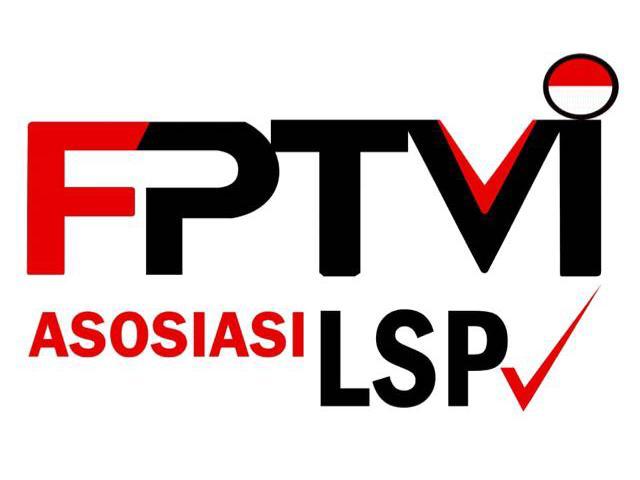Comparative Risk Prioritization in the Initiation Phase of the Pagerungan Besar Photovoltaic Plant: A Failure Mode and Effect Analysis (FMEA) and Risk Matrix Approach
Abstract
Keywords
Full Text:
PDFReferences
C. Peace, “The risk matrix: Uncertain results?,” Policy and Practice in Health and Safety, vol. 15, no. 2, pp. 131–144, 2017,
Y. K. Juan, U. Y. Sheu, and K. S. Chen, “Application of Statistical Data and Methods To Establish Rpn Ratings of Fmea Method for Construction Projects,” Journal of Civil Engineering and Management, vol. 29, no. 7, pp. 662–668, 2023,
S. M. Inayat, S. M. R. Zaidi, H. Ahmed, D. Ahmed, M. K. Azam, and Z. A. Arfeen, “Risk Assessment and Mitigation Strategy of Large-Scale Solar Photovoltaic Systems in Pakistan,” International Journal of Industrial Engineering and Management, vol. 14, no. 2, pp. 105–121, 2023,
S. Sreenath, K. Sudhakar, and A. F. Yusop, “Solar photovoltaics in airport: Risk assessment and mitigation strategies,” Environmental Impact Assessment Review, vol. 84, no. 2020, p. 106418, 2020,
P. Rajput et al., “A comprehensive review on reliability and degradation of PV modules based on failure modes and effect analysis,” International Journal of Low-Carbon Technologies, vol. 19, pp. 922–937, 2024,
D. F. Pogram and R. Prijadi, “FMEA-Based Logistic Regression Model for the Evaluation of Photovoltaic Power Plant Risk,” Quantitative Economics and Management Studies, vol. 5, no. 3, pp. 644–657, 2024,
A. Cahyono and Y. Dwie Nurcahyanie, “Identification and Evaluation of Logistics Operational Risk Using the FMEA Method at PT. XZY,” APTISI Transactions on Technopreneurship, vol. 5, no. 1SP, pp. 1–10, 2023,
A. Alameri, A. S. A. M. Alhammadi, A. H. Memon, I. A. Rahman, and N. A. N. Nasaruddin, “Assessing the Risk Level of the Challenges Faced In Construction Projects,” Engineering, Technology & Applied Science Research, vol. 11, no. 3, pp. 7152–7157, 2021,
F. Anackovski, I. Kuzmanov, and R. Pasic, “Action Priority in new FMEA as factor for Resources Management in Risk Reduction,” International Journal of Scientific & Engineering Research, vol. 12, no. 4, pp. 921–925, 2021.
A. Kumar, “Process-Based Project Proposal Risk Management,” Business Trends, vol. 6, no. Special Issue, pp. 16–24, 2016.
T. Callistus and A. Clinton, “The role of monitoring and evaluation in construction project management,” Advances in Intelligent Systems and Computing, vol. 722, pp. 571–582, 2018,
S. Nojavan, H. Pashaei-didani, K. Saberi, and K. Zare, “Risk assessment in a central concentrating solar power plant,” Solar Energy, vol. 180, no. January, pp. 293–300, 2019,
N. J. van Eck and L. Waltman, “Software survey: VOSviewer, a computer program for bibliometric mapping,” Scientometrics, vol. 84, no. 2, pp. 523–538, 2010,
A. Colli, “Failure mode and effect analysis for photovoltaic systems,” Renewable and Sustainable Energy Reviews, vol. 50, pp. 804–809, 2015,
S. Widi Astuti, M. Dhisa Alfariji, A. Armyta, and A. Prativi, “Efforts To Prevent Work Accidents with Failure Mode and Effect Analysis (FMEA) Method,” Journal of World Science, vol. 1, no. 11, pp. 1077–1093, 2022,
B. Salah, M. Alnahhal, and M. Ali, “Risk prioritization using a modified FMEA analysis in industry 4.0,” Journal of Engineering Research, vol. 11, no. 4, pp. 460–468, 2023,
D. E. Pertiwi and L. H. Kusumah, “Identification of operational risk of embedded Subscriber Identity Module (SIM) technology based on ISO 31000: Systematic Literature Review,” Sinergi, vol. 27, no. 2, pp. 193–200, 2023,
J. M. Davila Delgado and L. Oyedele, “Deep learning with small datasets: using autoencoders to address limited datasets in construction management,” Applied Soft Computing, vol. 112, p. 107836, 2021,
F. Eze, J. Ogola, R. Kivindu, M. Egbo, and C. Obi, “Technical and economic feasibility assessment of hybrid renewable energy system at Kenyan institutional building: A case study,” Sustainable Energy Technologies and Assessments, vol. 51, no. December 2021, p. 101939, 2022,
V. S. Moertini, “Managing risks at the project initiation stage of large is development for HEI: A case study in Indonesia,” Electronic Journal of Information Systems in Developing Countries, vol. 51, no. 1, 2012,
T. Zaveri, M. Patel, and V. Shah, “Challenges in Project Initiation,” Sydney: Proceedings of the First Australian International Conference on Industrial Engineering and Operations Management, Sydney, 2022, pp. 2561–2569.
S. Islam, N. U. Bhuiyan, and M. Hoque, “The Association between Project Success and Project Initiation Phase : A Study on Some Selected Projects in Bangladesh,” European Journal of Business and Management, vol. 3, no. 12, pp. 60–69, 2011.
R. M. Duncan and Dr. L. Ngugi, “Influence of Project Design Factors on Performance of Green Technology Market Projects in Meru County, Kenya,” European Journal of Business and Management Research, vol. 5, no. 6, pp. 155–162, 2020,
S. D. Savandha, A. Azzahra, and N. K. Purbasari, “Task Ambiguity: The Effects of Missing Standard Operating Procedures and Inter-Leadership Harmony in Organizations,” American Journal of Economic and Management Business (AJEMB), vol. 3, no. 1, pp. 1–10, 2024,
A. Munzur, “Canadian Northern Corridor Special Series Existing and Pending Infrastructure Projects : Potential Compatibility With the Canadian Northern Corridor,” SPP Research Paper, vol. 15, no. January, 2022.
Q. Li et al., “Regulatory Adaptation in the Construction Industry: Case Study of the OSHA Update to the Respirable Crystalline Silica Standard,” Journal of Legal Affairs and Dispute Resolution in Engineering and Construction, vol. 12, no. 4, pp. 1–8, 2020,
J. Gregorowicz-Kipszak, J. Bröchner, and A. Hagson, “Why and who? Complaints against infill plans for 30 Gothenburg projects,” Journal of Urban Design, vol. 00, no. 00, pp. 1–21, 2024,
V. S. Moertini, “Managing risks at the project initiation stage of large is development for HEI: A case study in Indonesia,” Electronic Journal of Information Systems in Developing Countries, vol. 51, no. 1, 2012,
M. Irfan et al., “Role of project planning and project manager competencies on public sector project success,” Sustainability, vol. 13, no. 3, pp. 1–19, 2021,
B. Govindaras, T. S. Wern, S. Kaur, I. A. Haslin, and R. K. Ramasamy, “Sustainable Environment to Prevent Burnout and Attrition in Project Management,” Sustainability, vol. 15, no. 3, 2023,
R. M. Mohamad, “Kajian Analisis Risiko Investasi Untuk Penyusunan Kelayakan Sistem Penyediaan Air Minum Dengan Metode Failure Mode And Effect Analysis (FMEA)(Studi Kasus: Di Kecamatan Manyar, Kabupaten Gresik),” 2020.
I. Kusmaryono, D. Wijayanti, and H. R. Maharani, “Number of Response Options, Reliability, Validity, and Potential Bias in the Use of the Likert Scale Education and Social Science Research: A Literature Review,” International Journal of Educational Methodology, vol. 8, no. 4, pp. 625–637, 2022,
DOI: http://dx.doi.org/10.12962%2Fj23378557.v11i2.a22667
Refbacks
- There are currently no refbacks.
This work is licensed under a Creative Commons Attribution 4.0 International License. IPTEK The Journal of Engineering published by Pusat Publikasi Ilmiah, Institut Teknologi Sepuluh Nopember.
Please contact us for order or further information at: email: iptek.joe[at]gmail.com Fax/Telp: 031 5992945. Editorial Office Address: Pusat Riset Building 6th floor, ITS Campus, Sukolilo, Surabaya 60111, Indonesia.








